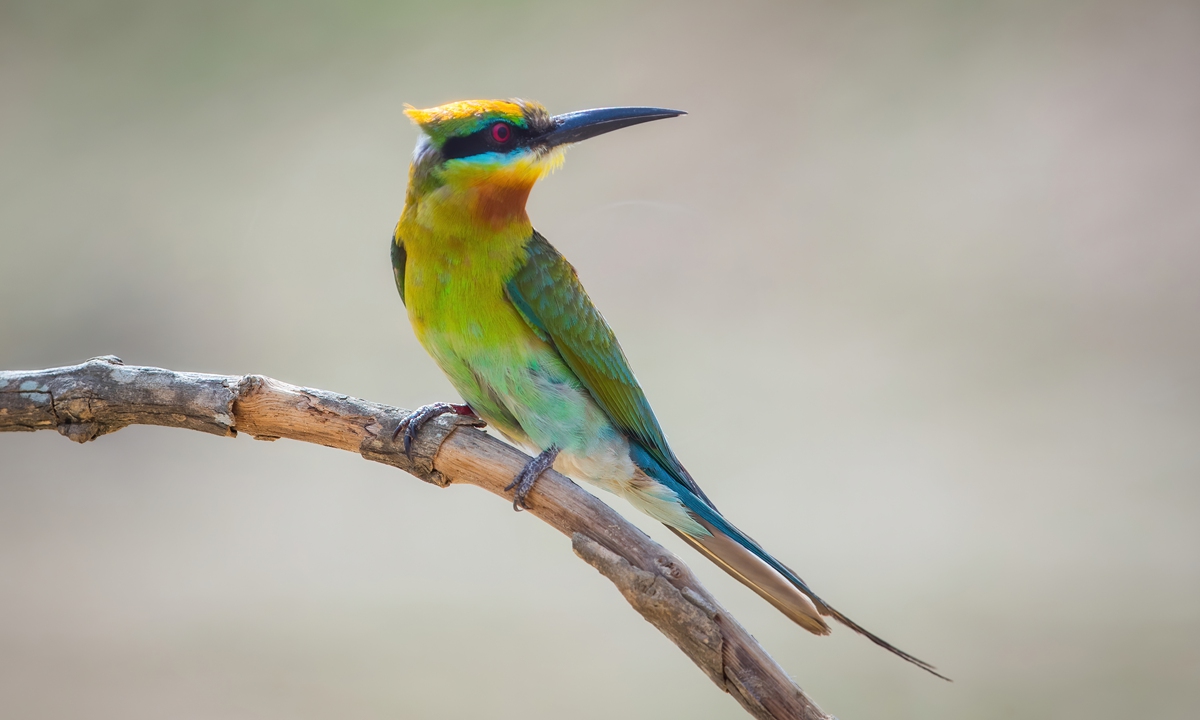
The blue-tailed bee-eater Photo: IC
The lower reaches of the Wuyuan River National Wetland Park in Haikou, South China's Hainan Province, are a haven for the blue-tailed bee-eater. Thanks to the establishment of an 8.39-hectare nature reserve and the joint efforts of the local government, social welfare organizations, and communities, this elfin species has been able to live freely in China, where its population has been growing steadily.
The blue-tailed bee-eater, (
Merops philippinus), is a second-class nationally protected animal in China. Feeding on flying dragonflies and other insects, it chooses to nest in sandy riverbed walls, the edges of fish ponds, and large sand piles. It is widely distributed across South and Southeast Asia, where many populations are strongly migratory, while in Hainan it is a resident and summer migratory bird.
In April 2018, blue-tailed bee-eaters were found breeding on a sandy slope next to the Wuyuan River National Wetland Park. In order to protect the breeding site, local authorities took prompt action.
In 2019, the government of Haikou approved the establishment of a protection area for the species in the lower reaches of the Wuyuan River.
Local authorities in Haikou have firmly adhered to the ecological concept of "lucid waters and lush mountains are invaluable assets," united the strength of the government, social welfare organizations, local communities and volunteers to participate in the conservation of the the species.
Every March, local authorities initiate volunteer activities to protect blue-tailed bee-eater breeding sites. And when breeding season arrives, a series of publicity campaigns focused on conservation are organized to mobilize the public's enthusiasm and raise awareness about biodiversity protection.
Currently, Haikou has held four consecutive photography competitions to inspire the general public to participate in conservation efforts.
With the joint efforts of all parties, several blue-tailed bee-eaters come to the Wuyuan River conservation area to breed from April to August every year, and the number of the birds has increased from 26 in 2018 to more than 80 at present.
Meanwhile, through the joint participation of many parties, shikra, red junglefowl, crow pheasants and leopard cats have been found one after another in recent years, further enriching the biodiversity of the lower reaches of the Wuyuan River blue-tailed bee-eater conservation area.
In 2021, protection of the blue-tailed bee-eater along the lower reaches of the Wuyuan River was recognized as a representative project of ecological restoration.
In the same year, a promotional film on the blue-tailed bee-eater was shown during the online exhibition of the China Pavilion at the 15th meeting of the Conference of the Parties (COP 15) to the Convention on Biological Diversity.
URL: https://www.seeglobalnews.com/read-945.html